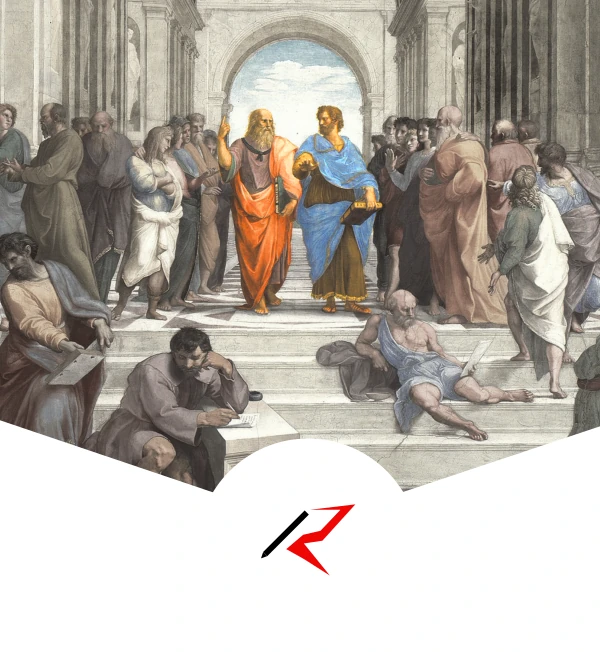What is Abstraction?
SUMMARY:
The word “abstract” is of Latin origin and means “to draw away from”, which is a perfect description of the process of abstraction.
Abstraction is an act-of-mind, where we take some thing in the world (a physical object or an idea), and focus on some aspects of it, while ignoring all others.
We abstract a thing to create a more general concept of it in our minds.
Concrete Things, Abstract Concepts
The abstract versus the concrete
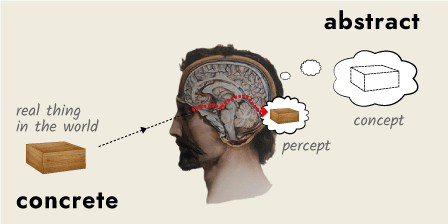
That which is “abstract” exists only in the mind and has no physical form.
The opposite of “abstract” in philosophical terms is “concrete”, which refers to something in the real world, with actual physical substance that you can experience with the senses.
Note: the noun “concrete” in the philosophical sense, is to be explicitly distinguished from the common building material, also known as “concrete”.
Concepts are mental classifications
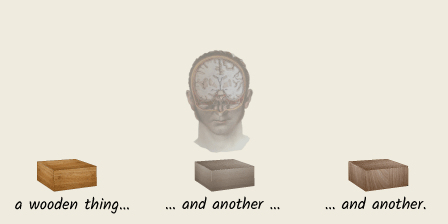
When we look at a pile of wooden blocks, we can distinguish the individual blocks as separate concrete entities, but we recognize they have some properties in common.
That list of qualities that they share in common (e.g. made of wood, rectangular shape etc.) allows us to place these different entities into the same abstract group in our minds, the group we label “block”.
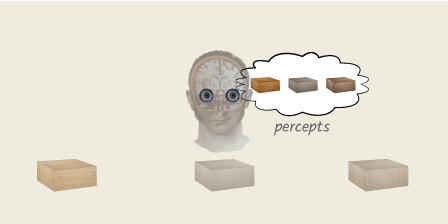
This abstract group can be called an abstraction, an idea, a notion or a concept.
I’ll use the word concept, as its Latin etymology (con, together; capio, to take) captures the process just described: the taking of different things together as one.
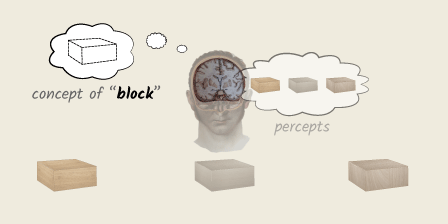
Concepts allow us to organize our knowledge of the world, combining an endless list of concrete items under one abstract group. If I say to you “block”, you know what I mean — I don’t have to describe or point out the thing I mean every time.
To See in the Mind’s Eye
Percepts are sense impressions
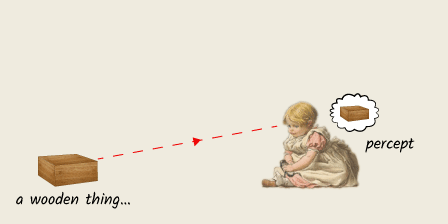
When a baby sees a wooden block, light-rays are reflected from the surface of the block into the baby’s eyes. Then, through a complex series of steps, a mental “image” of the block is formed in the baby’s mind.
The technical term for this mental image is a percept: a mental impression of an object obtained through the use of the senses.
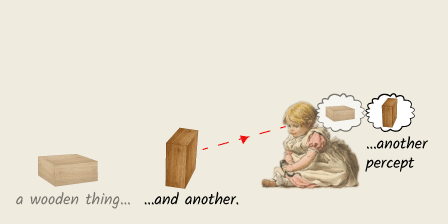
The baby cannot describe this as a “block”, as it has no concept of a “block”. When the baby sees another wooden block, it perceives another unique object, totally different to the first block.
Concepts are built from percepts
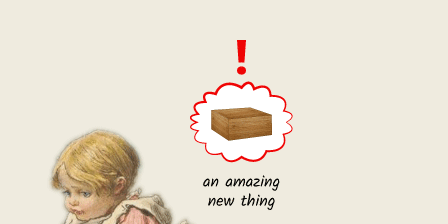
These two percepts are not integrated together in the mind of the baby, as they would be in the mind of an adult.
An adult would organize these two percepts (of the two different blocks) under the single notion of “block”, and use the word “block” to denote their mental classification.
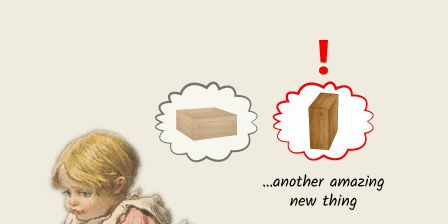
What the baby lacks is the “concept” of a block, where a “concept” is a classification of different percepts based on some criteria that unites them.
To the baby, these percepts remain distinct mental entities, as (for now) she lacks the capacity to create the abstract group that is a “concept”.
Concepts are formed by abstraction
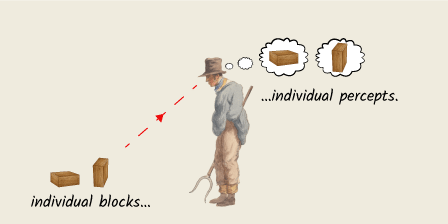
Compare a farmer looking at these two different blocks: unlike the baby, he can unite these two things under the concept of “block”.
But how is the concept of “block” formed?
When looking at a range of concrete things (blocks), we see at first their individual differences: but with an abstract perspective, we notice certain things are constant between them.
For the blocks, they have a general shape, a form, which is common to them all.
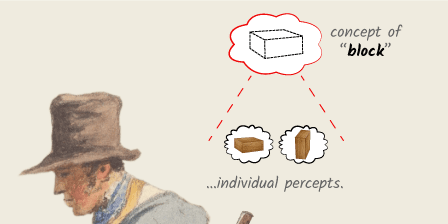
By selectively ignoring the individual differences, and focusing only on their common shape, we can create a category in our minds, a concept, which we will label “block”.
Under this concept, we can place any concrete item that fits the relevant criteria.
Abstracting the Abstract
There are levels of abstraction
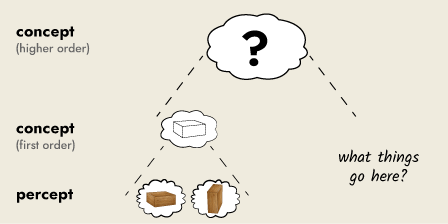
When we formed the concept of “block” earlier, we did so from directly perceiving wooden things in the real world.
We can call this a “first order” or “specific” concept, since it has a single type of direct physical referent — you could easily distinguish and point out a “block” if asked.
But the process of abstraction (and thus concept formation) doesn’t have to stop with specific concepts — we can abstract again to form a higher-order conception.
We can abstract an abstraction
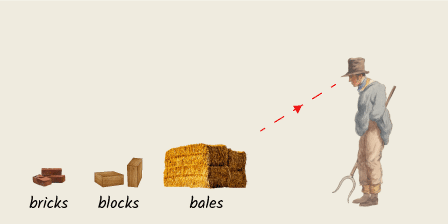
A farmer at the market observes the following “concrete” things:
- clay bricks,
- wooden blocks,
- bales of straw.
Yes, each of these things are concretely different, with different weights, sizes, textures and densities. The clay bricks are smaller and heavier than the blocks, and the bales of straw are the largest of the lot, but also the lightest.
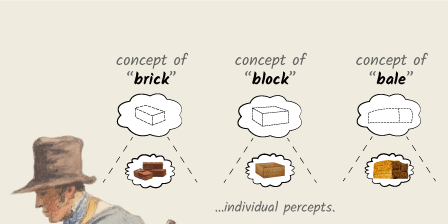
But we can abstract out these details, focusing only on the general “shape” of each of them.
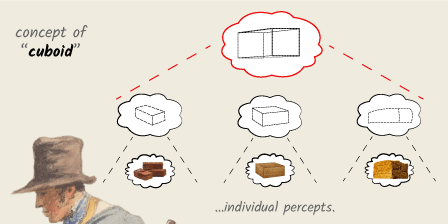
By ignoring their specific details, we discover that they share the same general structure: they are all 3-D rectangles, “cuboids”.
Higher-order concepts are more abstract
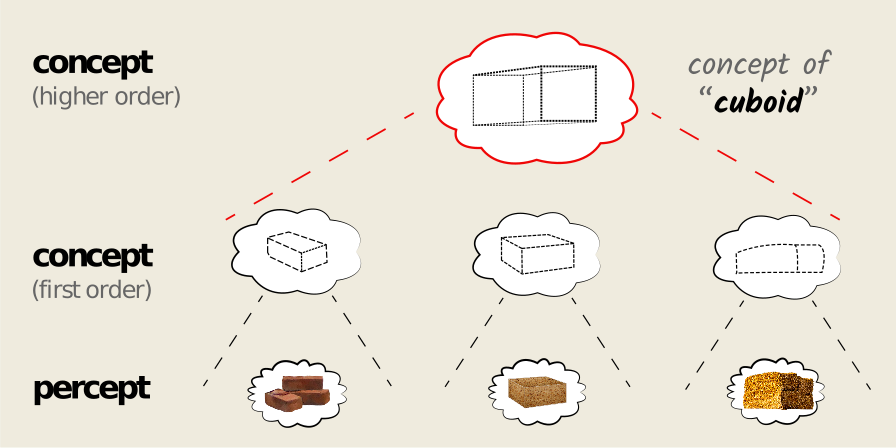
This concept of “cuboid” is a higher-order concept, a more general concept than the individual specific concepts of brick, block or bale.
The concept of “cuboid” takes in the lower-level specific concepts within its more general definition — it subsumes them.
If asked to point out a cuboid, you could point to more things than if you were just asked to point out a “block”.
This is the nature of higher-order concepts — they encompass more things in the real world than lower-level concepts.
The “real world” is a complicated place and organizing our knowledge of things into simple concepts provides great benefits.
The more we abstract away details to form higher-order concepts, the more things we can readily organize in our minds — this is the real power of abstraction. ∎
Key Takeaways
- Abstraction is the mental process of going from a specific thing (physical object or an idea) to a more general idea: in doing so, we ignore some aspects of the thing, while focusing on others.
- Abstraction allows us to form concepts, which are classifications of things in the mind.
- First, we abstract from a concrete thing in the real world, to a concept of that thing in the mind; but we can continue to abstract to more general concepts.
- Concepts allow us to organize our knowledge of the world, by focusing on the common aspects of things that are concretely different.
